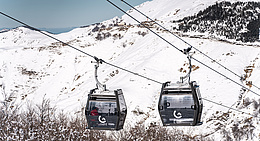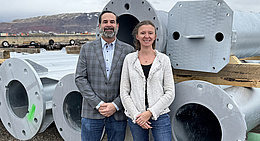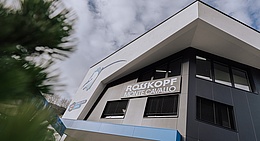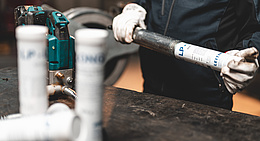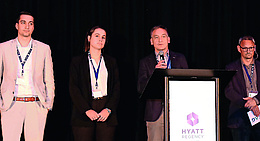ITTAB is an event whose significance is often underestimated in the ropeway world. That is mainly because the ropeway manufacturers and operators are not involved; the conference is primarily reserved for the ropeway authorities. It offers a platform for an open discussion of technical and organizational problems confronting the supervisory authorities.
As such it greatly helps reduce misunderstandings and differences of opinion between the various ropeway countries. That benefits the ropeway industry as a whole, as it ensures that decision makers have a higher standard of knowledge and understanding of the technical and organizational problems before measures are taken by the authorities.
This year’s 60th ITTAB was attended by almost fifty persons from eighteen different countries. In the six decades in which ITTAB has been held every year without exception, the conference has become increasingly international in character. Today, in addition to representatives of most of the European ropeway countries, the event also attracts visitors from other continents, from countries like Argentina, China, Hong Kong and Japan.
Accident reports and statistics
In the course of those sixty years, something of a traditional agenda has developed. After the usual round of introductions with the various delegations, the first working sessions are devoted to significant ropeway incidents and accidents. The various reports presented are a mutual source of valuable information for the monitoring activities of the authorities in their respective countries.
The same objective is served by the ITTAB accident statistics, in which accidents and incidents are listed on the basis of certain criteria. That enables delegates to draw comparisons with the situation in their own countries and to identify possible weaknesses in their monitoring activities.
Special topics
Another important section of the agenda is devoted to defined topics and specific technical questions, which the delegations prepare in advance and submit for discussion, like the problem of approvals for upgrades and conversions, or questions of supervision relating to the interface between summer slides and lifts for returning the carts or toboggans to the top of the slide.
Organizers
The 60th ITTAB was run by an organizing team comprising representatives of the Swiss Federal Office of Transport (FOT) and the Intercantonal Concordat for Ropeway and Ski Lifts (ICRS). And they deserve to be congratulated on the great job they did. Quite apart from the fact that the working sessions ran like Swiss clockwork, attendees were offered a standard of (5-star) accommodation in the conference hotel and a social program that left nothing to be desired.
Social program
In the surroundings of Lucerne at the western end of the big lake called Vierwaldstättersee, there is no shortage of destinations that are of great interest to any ropeway engineer.
The nearest mountain for some spectacular views is the Pilatus. The mountain lodge at just under 2,100 meters above sea-level was the setting for dinner on the evening of the first working day. Attendees were also treated to a presentation of a resort development project under the heading “Pilatus – fit for the future”, including various construction works planned by the operating company Pilatus-Bahnen AG to further upgrade the mountain as a tourist destination. While the party used a gondola for the first stage of the ascent and a jigback for the second stage, the downhill ride was quite different – on the world’s steepest rack and pinion railway. That was a highlight for every mountain railway fan!
On the afternoon of the second day, the group was taken on an excursion to the construction site of the Limmern pumped-storage power plant. On the way there, the party made a detour to Sattel to ride up on the Sattel-Mostelberg gondola to the world’s third longest pedestrian suspension bridge. The eight-passenger gondolas supplied by Garaventa have a very exciting feature: This is the only gondola worldwide in which the cabins revolve around their own axis twice during the ride, offering passengers a truly fascinating panoramic view of the mountain scenery.
The pedestrian suspension bridge, which was opened in July 2010, is also proving a big attraction. Not all tourists are bold enough to venture onto the wobbly bridge, which is 374 meters long and crosses a deep gorge 60 meters below. The supporting structure is comprised of four 50 mm full-locked coil ropes, and the suspension for the open grid walkway and handrails is very elastic!
The main attraction of the excursion, however, was the 40 t heavy-duty ropeway built by Garaventa for the Limmern power plant construction site. Although time was limited and the party could only inspect the bottom station of the installation, which has 90 mm track ropes supplied by Fatzer, they were duly impressed by the gigantic proportions of the components. Arno Inauen, CEO at Inauen-Schätti AG, is the project manager for the construction and operation of this ropeway. The installation is particularly interesting for its multiple carrier system. It comprises three connected carriages and hangers, with the bottom two used to transport materials in various carriers and the top hanger supporting a forty-passenger cabin.
On the actual construction site, the party were able to admire another miracle of modern engineering, which you do not get to see very often, in the form of a full-face boring machine for a tunnel leading from the valley floor to the underground powerhouse at the upper level of Limmern pumped-storage power plant. The tunnel has a diameter of eight meters and will accommodate a funicular with a payload of 240 tons, which will be used to transport the various components for the power plant.
The excursion closed with a visit to the Garaventa works in Goldau, which gave the group an opportunity to take a closer look at some interesting components for aerial trams and funiculars.
What would ITTAB be without the final gala dinner? That is now a tradition of the annual event, too. This year the location was the revolving restaurant at Stanserhorn. Again, the attraction for participants was not only the excellent culinary offering but also the ropeway engineering aspects of the tourism destination concept for Stanserhorn.
That is interesting for its successful combination of tradition and visionary engineering, with a lovingly maintained funicular originally constructed in 1893 used for the first stage of the ride up to Stanserhorn and the jigback on the second stage now being replaced by an exciting solution with a cabriolet cabin called the Cabrio-Bahn. The most striking feature of this advanced system is a double-decker 60-passenger carrier with an open top deck for thirty passengers.
The whole cabin is suspended in a frame with carriages running on two wide-gage track ropes. The haul rope configuration is based on the Funifor system, with the carrier haul rope sheaves located on the uphill end of the frame. The cabin itself is self-leveling. The new Cabrio-Bahn is due for commissioning in May 2012.
Outlook
The 60th ITTAB will doubtless be remembered as a highly successful event by all attendees. The program, including all the excursions and social highlights, reflected the organizers’ awareness of the need for the host country to focus on the central objective of ITTAB, namely continuous improvements to the safety of passenger transportation by rope. Next year, Austria will be hosting the 61st ITTAB in St. Anton am Arlberg. For 2012 Norway has offered to host the event, subject to the approval of the ITTAB executive. Josef Nejez
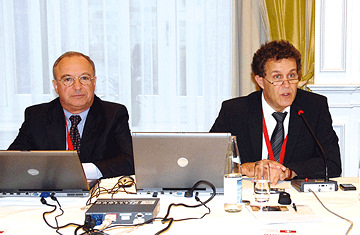
![[Translate to English:] Foto: Leitner](/fileadmin/_processed_/a/8/csm_Vertragsunterzeichnung_Narvik_6_copyright_LEITNER_print_501f2d5c24.jpg)
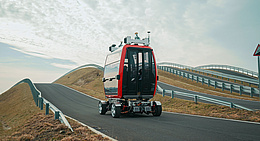
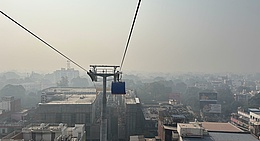
![[Translate to English:] (c) Doppelmayr](/fileadmin/_processed_/b/3/csm_85-ATW_Stechelberg-Muerren_Lauterbrunnen_CHE_001_6442c0520d.jpg)

